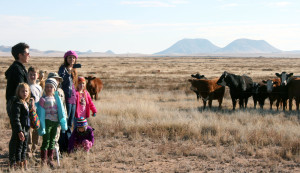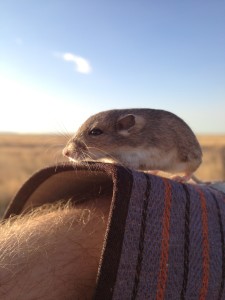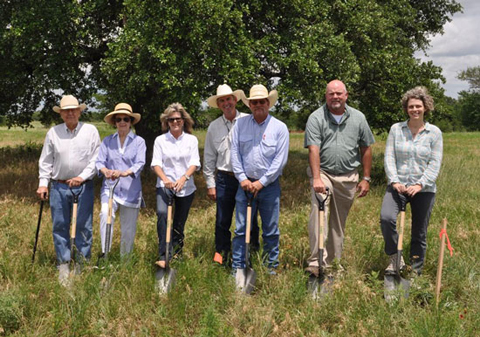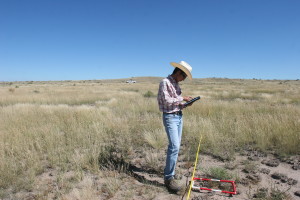MARFA – Laughter and moos filled the air as a herd of children met the herd of cattle at the Dixon Water Foundation’s Mimms Unit last Friday, during the Marfa International School’s week-long “Living Classroom” at the ranch.
Twenty-four students from kindergarten through eighth grade learned about desert grasslands and sustainable land management through science projects and presentations by local experts. The children experienced what it’s like to be a wildlife biologist tracking animals; to be a scientist monitoring water and soil quality; and to be a botanist identifying grasses and collecting native plants. Chasing grasshoppers, listening to birds, and writing about the landscape were also part of the program.
“This has been amazing,” said teacher Lisa Gordon. “To be outside actually doing this kind of science has so much meaning.”
The Dixon Water Foundation’s President and CEO Robert Potts introduced the ranch’s cattle management system, which mimics the grazing habits of native bison to conserve water, wildlife and the desert grassland.
“Cattle are the tool we use to keep more rainwater in the ground, improving the soil and improving the grassland,” he told the students, before demonstrating how he moves the ranch’s herd between pastures.
Mark Brandin, Marfa International School director, said the week was an enriching and memorable experience for all of his students.

Marfa International School students Amos and Felix learned to identify grasses and other native plants during the outdoor education program.
“I believe each child at MIS now has a much greater appreciation for the unique land in which we live, and we look forward to further studies at the ranch throughout the year,” he said.
The Dixon Water Foundation frequently welcomes students to its ranches in Marfa and northeast Texas. Last month Marfa ISD eighth-grade students had a nature writing workshop at Mimms, and Sul Ross State University wildlife management students took a field trip there in September.
Educators are invited to contact Potts at rpotts@dixonwater.org for information about visiting the ranch, as well as to discuss funding opportunities for using the ranch as a classroom.





